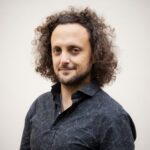Link to Pubmed [PMID] – 18043717
Eur. J. Hum. Genet. 2008 Feb;16(2):243-51
The arylamine N-acetyltransferase 2 (NAT2) enzyme detoxifies a wide spectrum of naturally occurring xenobiotics including carcinogens and drugs. Variation at the NAT2 gene has been linked to the human acetylation capacity, either ‘slow’ or ‘fast’, which modifies susceptibility to cancer and adverse drug reactions. We investigated the possible influence of natural selection in shaping the acetylation phenotype and the NAT2 gene variability in six Central Asian populations, who are either long-term sedentary agriculturalists (two Tajik populations), recent sedentary agriculturalists (Kazakhs, Uzbeks) or nomad pastoralists (two Kirghiz populations). To this end, we sequenced the entire NAT2 coding exon, as well as genotyping nine intergenic SNPs covering a 200-kb region. Our results revealed that the two Tajik populations exhibited significantly higher proportions of slow acetylators than the nomadic populations. In addition, sequence-based neutrality tests yielded significantly positive values in Central Asian populations following an agriculturalist lifestyle, due to an excess of haplotypes at intermediate frequencies. Taken together, our data suggest that balancing selection, and/or directional selection on standing low-frequency alleles, have shaped NAT2 genetic diversity and the human acetylation phenotype in Central Asian agriculturalists. These results further support the hypothesis that a major transition in human lifestyle, such as the emergence of farming has dramatically changed human chemical environments and the selective pressures they imposed.


